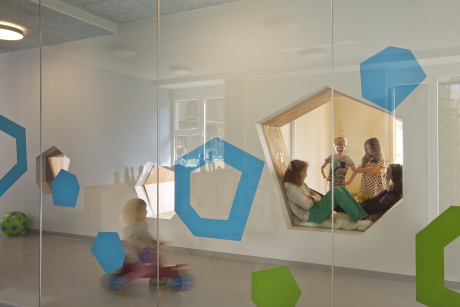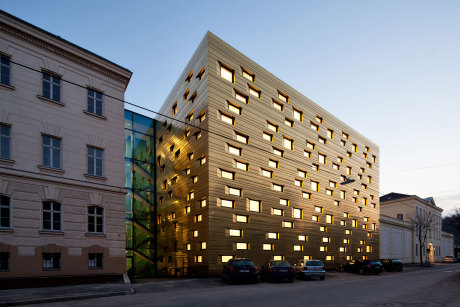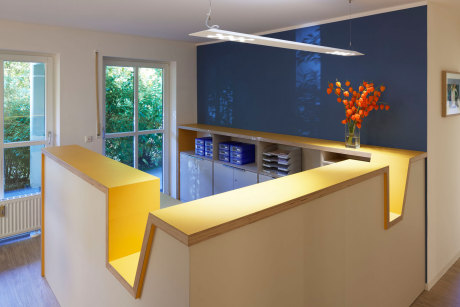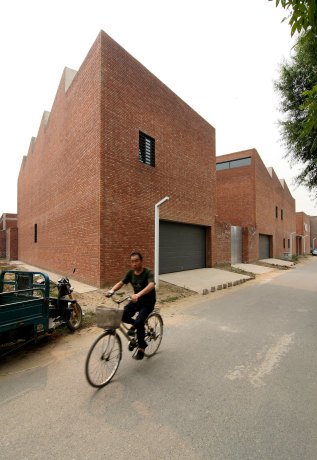KNOWSPACE architecture + cities BDA
Chegs Campus Canteen
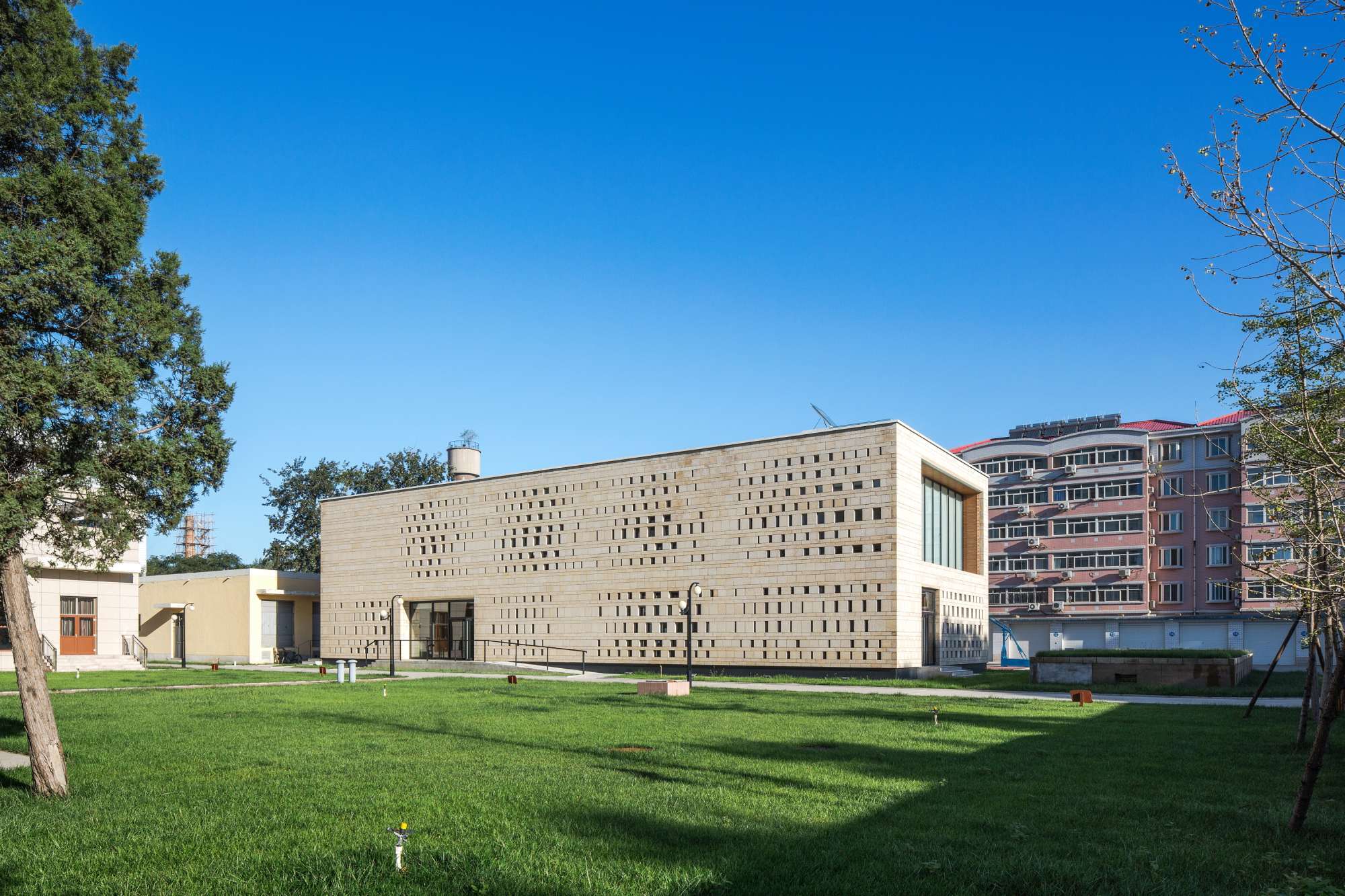
Baoding / China
Architecture:
KNOWSPACE / Erhard An-He Kinzelbach Architekt BDA
Project type:
Direct commission
Client:
Center for Hydrogeology and Environmental Geology Survey (CHEGS), Baoding
Consultants:
Baoding Institute for Architecture Design Co., Ltd (Structure, HVAC and site supervision)
Area:
660 m2 GFA
Time:
2012-2014
Photography:
Lv Hengzhong
The reorganization of the Center for Hydrogeology and Environmental Geology Survey’s campus includes several different interventions in 2 phases: phase 1 comprises of a 2-storey canteen and activity center building and the renovation of the doorman house, while phase 2 includes a 10-storey laboratory building and the refurbishment of the office building facade from the 1980s.
KNOWSPACE now completed phase 1. As the originally planned canteen in the new office building’s basement did not gain permission to operate, the institute had to look for an alternative location on the campus. A brick storage building from the 70s in the backward had to make place for a new building, but the planning department restricted the footprint of the new volume to match the old footprint. As a consequence, the canteen is a simple cubic volume. Both floors, due to functional requirements, are flexible single spaces. The ground floor houses the employees’ canteen with the kitchen and a separate VIP dining room, and the first floor mainly consists of a multi-purpose space that can be equally used to play table-tennis or to hold lectures and presentations with a stage and an audience. The main twin stairs with 3 runs each that separate entering and leaving traffic and an additional fire stair connect the two floors.
The main spaces are zoned and differentiated through a performative facade. It consists of 2 layers: while an inner layer with a series of floor to ceiling glass windows provides climatic separation, the outer layer is a screen-like perforated stone facade with gradually varying degrees of opening, both servind as a shading and a opening device. In specific occasions, large openings cut through the stone facade and provide views of the outside and inside alike. The stone wall stands independently and has a depth of 22cm which articulates its materiality. As one of the main areas for the institute’s field research is Xinjiang, the field of perforations in the façade may be seen as an interpretation of the Xinjiang raisin drying houses, only that the more permanent stone brick substitutes the original rammed earth brick material. The yellow granite’s surface is hammered or, as they say in China, treated like a lychee-skin. The landscaping integrates a basketball court and an adjacent existing air raid shelter that sticks out of the ground.
Architecture:
KNOWSPACE / Erhard An-He Kinzelbach Architekt BDA
Project type:
Direct commission
Client:
Center for Hydrogeology and Environmental Geology Survey (CHEGS), Baoding
Consultants:
Baoding Institute for Architecture Design Co., Ltd (Structure, HVAC and site supervision)
Area:
660 m2 GFA
Time:
2012-2014
Photography:
Lv Hengzhong
The reorganization of the Center for Hydrogeology and Environmental Geology Survey’s campus includes several different interventions in 2 phases: phase 1 comprises of a 2-storey canteen and activity center building and the renovation of the doorman house, while phase 2 includes a 10-storey laboratory building and the refurbishment of the office building facade from the 1980s.
KNOWSPACE now completed phase 1. As the originally planned canteen in the new office building’s basement did not gain permission to operate, the institute had to look for an alternative location on the campus. A brick storage building from the 70s in the backward had to make place for a new building, but the planning department restricted the footprint of the new volume to match the old footprint. As a consequence, the canteen is a simple cubic volume. Both floors, due to functional requirements, are flexible single spaces. The ground floor houses the employees’ canteen with the kitchen and a separate VIP dining room, and the first floor mainly consists of a multi-purpose space that can be equally used to play table-tennis or to hold lectures and presentations with a stage and an audience. The main twin stairs with 3 runs each that separate entering and leaving traffic and an additional fire stair connect the two floors.
The main spaces are zoned and differentiated through a performative facade. It consists of 2 layers: while an inner layer with a series of floor to ceiling glass windows provides climatic separation, the outer layer is a screen-like perforated stone facade with gradually varying degrees of opening, both servind as a shading and a opening device. In specific occasions, large openings cut through the stone facade and provide views of the outside and inside alike. The stone wall stands independently and has a depth of 22cm which articulates its materiality. As one of the main areas for the institute’s field research is Xinjiang, the field of perforations in the façade may be seen as an interpretation of the Xinjiang raisin drying houses, only that the more permanent stone brick substitutes the original rammed earth brick material. The yellow granite’s surface is hammered or, as they say in China, treated like a lychee-skin. The landscaping integrates a basketball court and an adjacent existing air raid shelter that sticks out of the ground.









